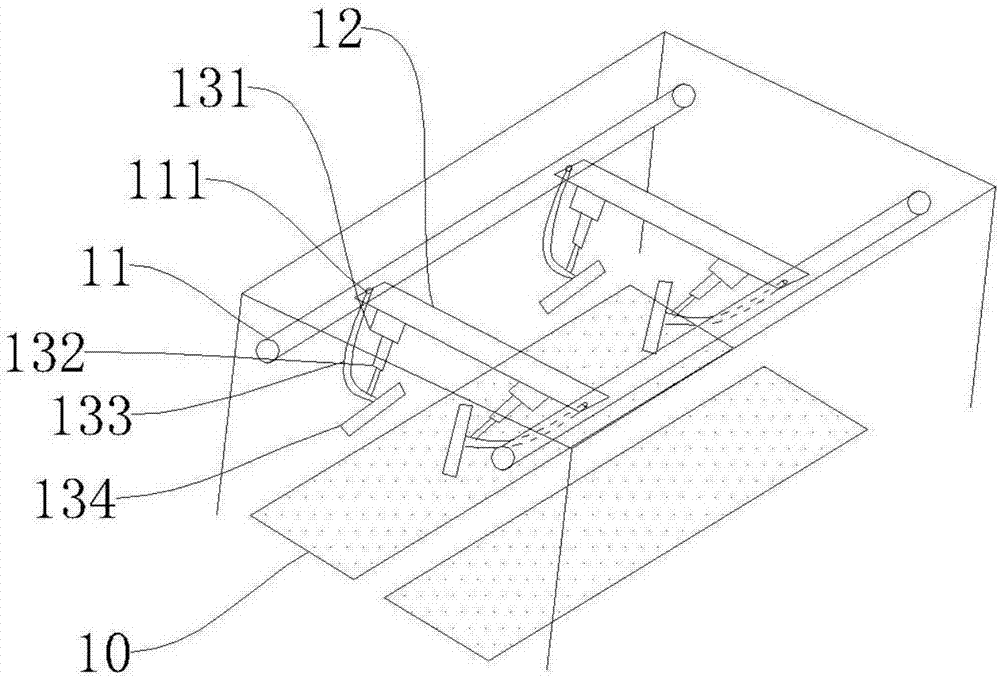Culture method for ramulus uncariae cum uncis
A cultivation method and technology of Uncaria, applied in the field of cultivation of Uncaria, can solve the problems of unable to meet the increasing demand, low yield and medicinal components of Uncaria, and difficulty in maintaining the humidity of Uncaria, and achieve operability and weight. Effects of good virility, reduced prevalence of root rot, and high yield of Uncaria
- Summary
- Abstract
- Description
- Claims
- Application Information
AI Technical Summary
Problems solved by technology
Method used
Image
Examples
Embodiment 1
[0034] Step 1. Select mature and plump Uncaria seeds, soak and sterilize them in sequence, and then transfer them to the seed medium for cultivation for 20-25 days to obtain hypocotyls of sterile seedlings. The seed medium is a hormone-free MS medium;
[0035] Step 2, cutting the hypocotyl explants without cotyledon nodes with a length of 0.4 cm from the hypocotyls of sterile seedlings, placing the hypocotyl explants flat in the first callus culture medium for dark culture, after 20 days , the two ends of the hypocotyl explant expand to form the hypocotyl callus, and then the hypocotyl callus is transferred to the second callus medium for dark culture for 20 days to obtain fresh callus, the first The callus medium comprises MS, 1.0mg / L of TDZ, the NAA of 0.03mg / L, and the second callus medium comprises MS, 1.0mg / L of TDZ, 0.03mg / L of NAA, 80mg / L L colchicine;
[0036]Step 3, the fresh callus is transferred to the differentiation medium for differentiation culture for 20 days ...
Embodiment 2
[0041] Step 1, select mature and plump Uncaria seeds, soak and sterilize them in turn, and transfer them to the first medium for cultivation for 20-25 days to obtain hypocotyls of sterile seedlings. The seed medium is a hormone-free MS medium;
[0042] Step 2, cutting out hypocotyl explants with a length of 0.6 cm from the hypocotyls of sterile seedlings without cotyledons, placing the hypocotyl explants flat in the first callus medium for dark culture, and after 23 days , the two ends of the hypocotyl explants expand to form the hypocotyl callus, and then the hypocotyl callus is transferred to the second callus medium for dark culture for 15 days to obtain fresh callus, the first The callus medium comprises MS, 1.2mg / L of TDZ, the NAA of 0.04mg / L, and the second callus medium comprises MS, 1.2mg / L of TDZ, 0.04mg / L of NAA, 150mg / L L colchicine;
[0043] Step 3, transfer the fresh callus to the differentiation medium and carry out differentiation culture for 23 days to obtain ...
Embodiment 3
[0048] Step 1, select mature and plump Uncaria seeds, soak and sterilize them in turn, and transfer them to the first medium for cultivation for 20-25 days to obtain hypocotyls of sterile seedlings. The seed medium is a hormone-free MS medium;
[0049] Step 2, cutting the hypocotyl explants without cotyledonous nodes with a length of 0.8 cm from the hypocotyls of sterile seedlings, placing the hypocotyl explants flat in the first callus medium for dark culture, and after 25 days , the two ends of the hypocotyl explants expand to form the hypocotyl callus, and then the hypocotyl callus is transferred to the second callus medium for dark culture for 7 days to obtain fresh callus, the first The callus medium comprises MS, 1.5mg / L of TDZ, the NAA of 0.05mg / L, and the second callus medium comprises MS, 1.5mg / L of TDZ, 0.05mg / L of NAA, 200mg / L L colchicine;
[0050] Step 3, the fresh callus is transferred to the differentiation medium to carry out differentiation culture for 25 day...
PUM
 Login to View More
Login to View More Abstract
Description
Claims
Application Information
 Login to View More
Login to View More - R&D
- Intellectual Property
- Life Sciences
- Materials
- Tech Scout
- Unparalleled Data Quality
- Higher Quality Content
- 60% Fewer Hallucinations
Browse by: Latest US Patents, China's latest patents, Technical Efficacy Thesaurus, Application Domain, Technology Topic, Popular Technical Reports.
© 2025 PatSnap. All rights reserved.Legal|Privacy policy|Modern Slavery Act Transparency Statement|Sitemap|About US| Contact US: help@patsnap.com

